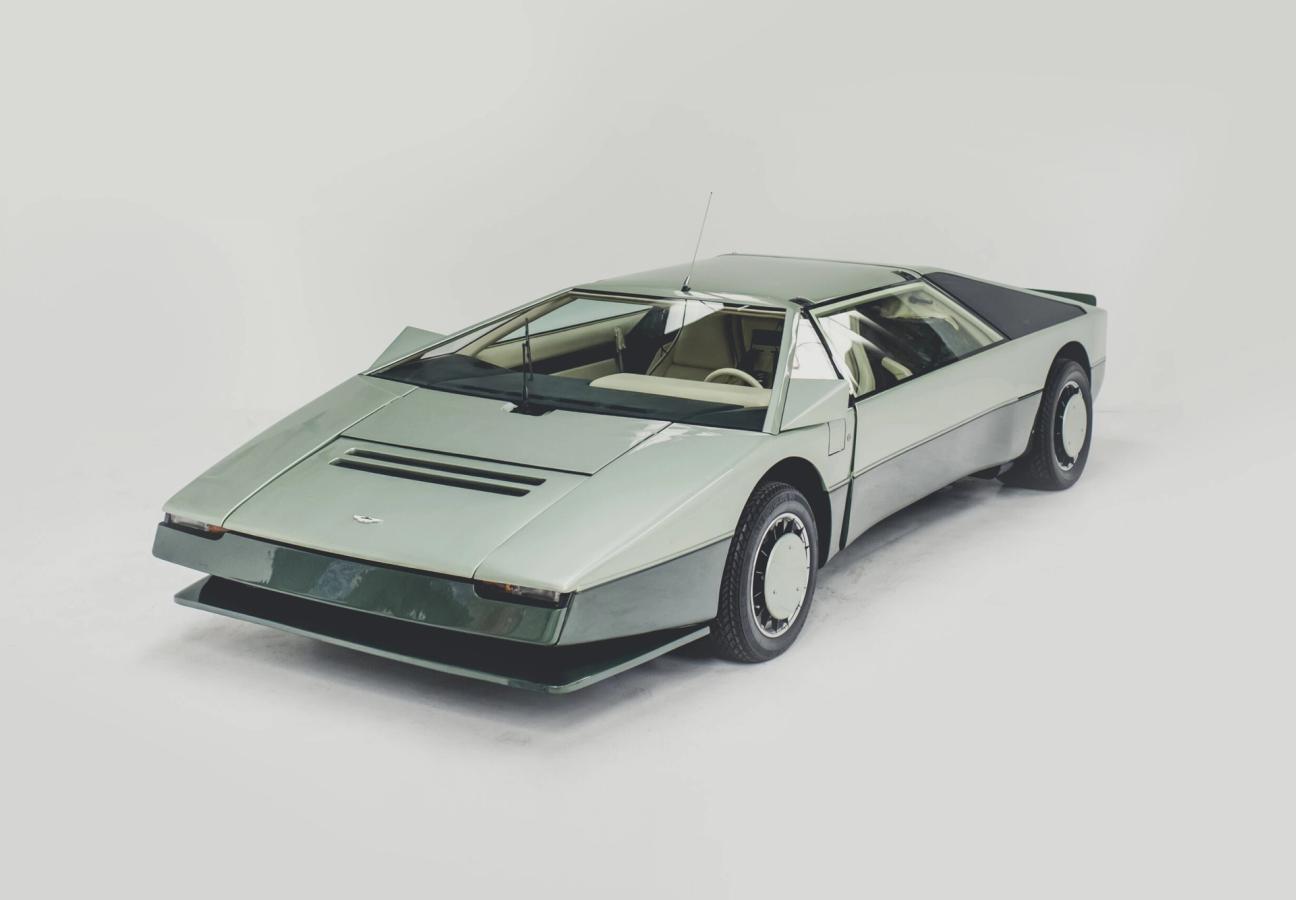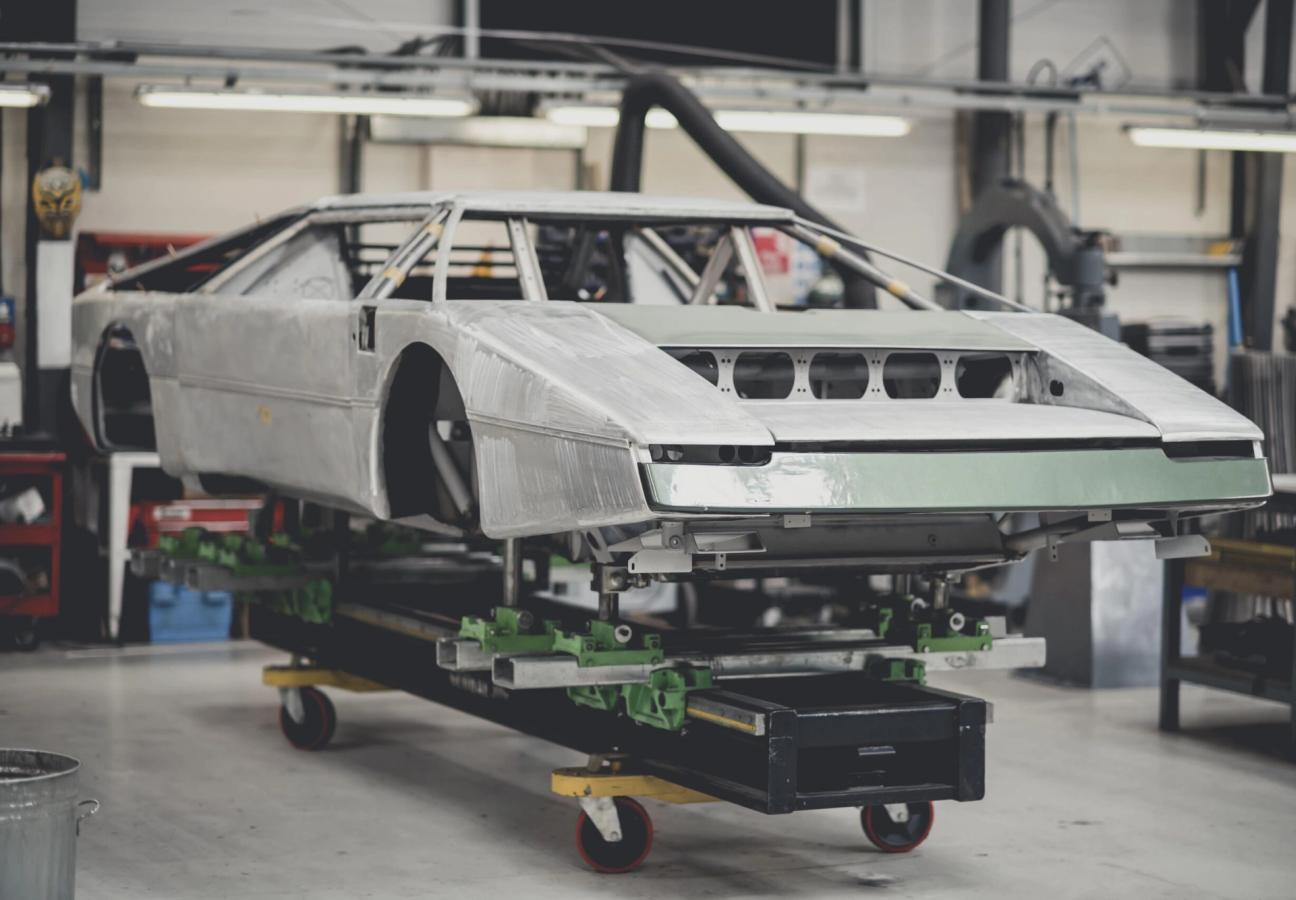

Words: Jonathan Wells
Photography: Amy Shore
Every dog has its day — some just take a little longer than others to hit the big time. But, in the case of this 700-horsepower hound, that day is fast approaching. And it’s going to be a doozy when it arrives. Because, next year, when the fabled, mysterious 1980 Aston Martin Bulldog is finally restored to full working power, it will try to break the 200mph barrier.
But let’s not get ahead of ourselves. To fully understand the magnitude of this achievement, we must first turn back the clock — 40 years ago to this idiosyncratic Aston’s development. The year is 1979; the British carmaker has just opened a new facility in Newport Pagnell and it’s after the coveted title of ‘fastest ever production car’. Pencils are sharpened, minds are whirring — and the Bulldog is snarling to life.
So what led Aston Martin to create such a futuristic-looking machine? Originally, the Bulldog was intended to show off how cutting-edge the Newport Pagnell facility was — as capable of crafting supercars with spaceship looks as it was of building the contemporary V8 and V8 Vantage production cars. A run of between 15 and 25 Bulldogs was planned, its name borrowed from a ‘Scottish Aviation Bulldog’ — the aeroplane flown by Aston Martin managing director, Alan Curtis — and the sharp wedge shape was designed by William Towns.
And what a wedge it was. With the gunmetal finish and gull-wing doors, the Bulldog has shades of DeLorean about it — although that Back to the Future-famous car wouldn’t be designed until a year later. It earned the nickname ‘K9’, after the angular robotic dog in sci-fi television series Doctor Who, was trimmed with leather and walnut and decked out with scores of LED buttons in the cabin. It had five centre-mounted, hidden headlamps, a 5.3-litre V8 engine with twin Garrett turbochargers and caused quite a stir in automotive circles before it was even fired up.

But there was a problem. Behind the scenes, Aston Martin was struggling. Sales of its sports cars had fallen to a worrying 150 per year and Alan Curtis and his shareholders had decided to pare back production even further — instead focusing on the servicing and restoration of existing models. The Bulldog was to be their last role of the dice.
And then came Victor Gauntlett. Petrochemical entrepreneur, car enthusiast and namesake of the recent coach-built Aston Martin Victor, Gauntlett was the man who saved the British automaker from continued decline. He negotiated James Bond back behind the wheel of an Aston in Timothy Dalton’s 1987 debut The Living Daylights, steered the carmaker back into motorsport and even brokered a deal that saw Ford invest millions into the brand.
But he also shut down the Bulldog. Deeming the project too costly, production stopped after only one car had been made and, four years later, it was sold to a Middle Eastern collector for £130,000 — at once disappearing and becoming the stuff of urban legend. The saddest part of the story? The fastest speed ever recorded by this 200mph motor was just 192mph — at the Motor Industry Research Association track in late 1979. To all intents and purposes, it looked like the Bulldog had missed its chance.
And yet, throwing down the gauntlet four decades on comes Victor’s son — Richard Gauntlett. The latest enthusiast in an automotive dynasty, Richard has partnered with the Bulldog’s latest buyer and is intent on making the legendary Aston Martin ride again.
But it’s not going to be easy. The car was sold to an American buyer by the Middle Eastern enthusiast sometime before the turn of the millennium. It was shown at the Goodwood Festival of Speed in 2009, and at Aston Martin’s 100th anniversary celebrations in 2013. By then, it had been painted green, and the original interior had been reupholstered into black and tan leather.
To return the car back to its former glory, the younger Gauntlett has his work cut out.

The restoration will be carried out by Shropshire-based specialists Classic Motor Cars. Currently, it is estimated to take around 18 months to complete and, so far, the car has been disassembled to its subsystem form, including de-glazing and removing all interior and exterior trims and closures, body fittings, and lights. The chassis has been soda-blasted to remove any signs of corrosion, damaged tubes that form the rear chassis have been removed, and the ZF Transaxle has been stripped. It’s already been a big job.
But the team, that includes Classic Motor Cars Managing Director Nigel Woodward, are confident in their abilities — and are striving to keep enthusiasts up to date with progress online. Right now, the back suspension is being rebuilt and a roll cage constructed for the Bulldog. The question is, when the car finally rolls back onto the road next year — will it finally break the 200mph barrier? We can’t wait to see…
Looking for a more affordable classic? Here are the best models to buy this year…
Become a Gentleman’s Journal member. Find out more here.


